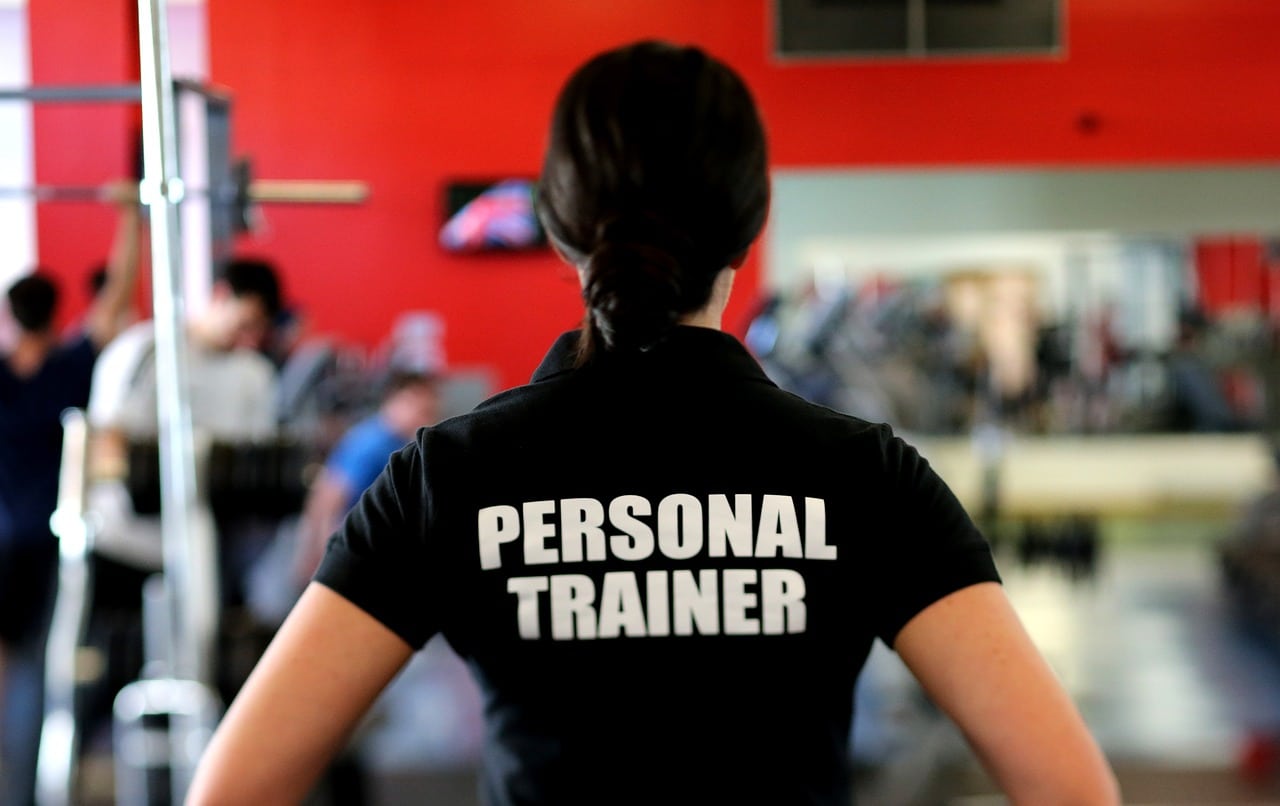Imagine these two all-too-common scenarios.
Scenario 1:
Your health coaching client receives a push notification on their phone. “New: You’ve Got a Newsletter from Your Health Coach!” Without even opening it, he pushes DELETE.
Scenario 2:
A woman is browsing the web in search of information online about mindful eating. She comes across dozens of blog posts written by nutritionists, health coaches, foodies, and doctors. Among the choices is the blog you wrote detailing your experience with mindful eating, but you don’t get a click from her—not even the title catches her attention.
Clearly, both scenarios described above are precisely what you want to avoid after you’ve invested time and money into creating content that is meant to drive engagement and sales.
If you feel like this is happening to you, and your digital marketing strategy has a sales component driven by content engagement, then it is time to revise your strategy.
In this article, we will provide three critical coach-centered tips that will help you create written content people not only want to read but that they will also want to engage with and share.
Create a Brand Voice and Tone (and Stick to It)
Through your writing, clients and potential clients are getting to know you and your brand. A consistent brand voice will help people understand, absorb, and, ultimately, recognize your brand easily. Additionally, you help to express confidence in your brand. With an authentic, dependable voice and tone, you build trust with your clients and followers, and you will have ample opportunities to convey essential messages that will help you achieve your mission.
To put these ideas into perspective, try thinking about how your friends express themselves as part of their “personal brand.”
Some of your close friends might speak in a matter-of-fact voice and serious tone while using higher-level vocabulary. Others may have a more friendly voice, and while they may take longer to explain things, even your younger sister has a crystal-clear idea of what she is talking about.
Your coaching brand should also have a clear and consistent voice and tone. While it isn’t always the case, most coaches are the front-person of their brand, so the voice and tone should reflect their natural voice and tone. In other words, as your clients read your content, they should be able to imagine you saying it out loud. Ask yourself, if you were to impart the reflections and information with your clients face-to-face, how would you express it?
Even if you outsource your content writing, you should ensure that writers express your brand-specific voice and tone through their writing.
Voice vs. Tone
Even dedicated writers will often confuse voice and tone. While, for most coaches, you don’t need to know the technicalities of the difference in your day-to-day activities, a short reflection on each of them is instrumental in defining how you will communicate to your audience.
So, what is the difference between voice and tone?
Voice: is the personality you communicate through your writing. Think of the quirks your local grocer has when he makes small talk—does he have any quirks? Does he have a dry sense of humor? Is he super polite?
Tone: is the attitude or emotion you communicate through your writing. The tone conveys how you feel about a particular subject. For example, the way a wildlife volunteer would write about the news of a baby elephant rescued from poachers will likely vary dramatically from how a journalist would write. The volunteer’s tone might be aggrieved as she describes the poacher’s actions, then celebratory as she describes the rescue efforts, and finally appreciative of the rescuers. The journalist might be compassionate while still maintaining a direct and impartial tone.
If this is a little confusing, and you are unsure how this fits into how to write great content, we’ve created a free worksheet to help you build your own content style guide.
Know Your Audience
When you know who you are talking to, you will have a much better idea of what you need to say and how you need to say it.
One of the most effective ways to have a snapshot of your audience is to develop a persona.
A persona is a “sketch” of your target market that directly informs your content strategy. The development of personas is based on commonalities between those who are currently your clients and/or could potentially be your clients. Ideally, these commonalities have evidence to back them up, rather than just making assumptions.
To develop a persona, consider these following steps as adapted from Jodi Harris of the Content Marketing Institute:
- Envision your ideal customer.
- Consider your client’s specific health objectives and the obstacles that might exist to achieve those objectives and other responsibilities they may have that compete with health goals.
- Communication preferences: How do your client inform themselves? What content is interesting to them? What formats do they prefer? How much information do they want to receive, and how often? Do people or things influence the type of content they consume?
Finally, ask yourself, how will your content meet your persona’s needs? You can build different scenarios that demonstrate how your persona will find and engage with the content you create to help you envision how and what you need to communicate to them through your content.

The Essential Business Course for Health and Wellness Entrepreneurs
Gain the skills needed to build and run a thriving, lucrative health and wellness business.
Create Meaningful Content
The internet has been around long enough for us to know when a blog is out there for the sole purpose of trying to sell us something. As certified health, nutrition, and fitness coaches, we know miracle pills don’t exist. We know that one-week, liquid-only fasts are not lifestyle changes. And we get a strange feeling when we read articles that aren’t backed by research.
If we know all this, then it’s time to create content that is different from what you usually see online.
Content marketing and SEO guru Neil Patel developed a list of ingredients that make great content, which we adapted for health coaches:
- Create original content: This isn’t just about not copying and pasting content from another coach’s blog. If you develop and express unique ideas, not only will your readers feel enlightened, the Google search engine will reward you for it. As Neil Patel says, “if you don’t have anything useful to say, don’t say it at all.”
- Create Strong Headlines: Of the people who read your headline, only about 20 percent will read your post. You can boost this number if you create a headline that is luring, original, and accurately communicates what they will learn from reading your content.
- Make actionable content: How will your clients apply your content to their lives to make them healthier or fitter?
- Source your information: The last thing you want is for a reader to call you out for spreading inaccurate information. For all of the data, statistics, and health lessons you communicate, make sure they are verifiable. After all, one of the responsibilities of a health and wellness professional is to educate your clients.
- Create content that makes your readers want to engage: If your audience is engaged, they will want to eat up what you write with their eyes and digest the content with their minds. Inspire questions, inspire them, and guide them through scenarios they can relate to. Think of it this way: If you can get readers to comment on a post, you are on the right track!
- Create content that aligns with your preferences: Not everyone is a writer. And not everyone has clients who like reading. So take some time to tune into your preferences and what you’ve seen works best for your clients. If you like to be in front of the camera and show your clients who you are, consider making videos. If you like to talk and discuss topics with others, consider a podcast. It’s better to do fewer things well than many things that will burn you out and not allow you to make meaningful content.
Bonus Blog Tip: Stay Up-To-Date with Search Engine Algorithms
Even if you create a fantastic, beautifully-written, and engaging blog post on how to overcome body image struggles, no one will read it if it isn’t searchable. Unless they go out to specifically search your blog (thanks for the like, Mom!), people will only find the article if it comes up on their search engines.
For this reason, as part of your marketing plan, you have to stay up-to-date with Search Engine Optimization (SEO) strategies. Keep in mind that SEO is much more complicated than keyword stuffing.
Several companies are dedicated to analyzing and informing the public about algorithm updates specific to different search engines. For example, if you want to optimize your content to be findable on Google, you can study the information on the following sites and create a strategy from there:
We recommend that you follow at least a few of these resources to compare and contrast information.
If you outsource your digital marketing strategy, make sure they are continually updating their knowledge and implementing best practices with you.
Main Takeaways
- Content writing is how you can communicate your value as a coach to clients and potential clients.
- You can create great written content by defining your voice and tone, creating a persona and knowing your audience, and creating meaningful original content.
- If blog-writing is part of your content writing and content marketing strategy, make sure to stay up-to-date with SEO algorithms.
- You can create consistent, compelling content by creating a content and style guide for your brand.
Resource: Write Up Your Coaching Brand Content and Style Guide
Don’t have a Coaching Brand Content and Style Guide? No problem! Here is a quick questionnaire that will help guide you through the most important components to include in your guide. The final product will help you reflect your brand identity through the written content you publish. You can use it yourself to make sure you stay consistent across communication platforms, or you can share it with your outsourced content creators.
Questionnaire to Help You Design Your Brand Content and Style Guide
Introductory questions
- What is your brand mission?
- Who are you as a coach? Describe what makes you unique, what is most important to you as a coach, and how you want to help your clients achieve their goals.
Content goals
What sort of information do you want people to access? If you can, define 2-5 categories of content (for example, reflections, recipes, guidelines, research). Do these categories of content help achieve your brand mission? How so?
Persona
Who is your ideal client? How old are they? What are their goals?, how do they get their information, and how do they make choices? (Note: You might have to do a little research to pin this one down.) Are they experts in a certain field?
Style
- Tone: How do you view your ideal relationship with clients? Is it a formal relationship like a doctor might have with their patients? A fraternal one like you might have with younger siblings? A proper, yet warm relationship a teacher might have with their students? How else might you describe your ideal relationship with your clients?
- Keywords: Informal, formal, entertaining, clear, concise, appreciative, assertive, candid.
- Note: This may change from piece to piece, or from category to category of content.
- Voice: Think about a key concept you have successfully communicated to a client or friend (weight loss, good posture, mindful eating, hydration). How did you communicate it to them? Keywords: Plainspoken, scientific, genuine, sense of humor, quirky, sarcastic.
Technical specifications:
- What length do you want your articles to be?
- Do you want to include outside links? If so, what kinds?
- Do you want to include media?
- Will you include keywords? If so, how many? How do you want to integrate them into the content?

The Essential Business Course for Health and Wellness Entrepreneurs
Gain the skills needed to build and run a thriving, lucrative health and wellness business.



